Worst Types of Positions for Inclusions And Flaws
In a perfect world, every diamond should be flawless. However, in reality, imperfections are usually found in diamonds because of their chaotic formation process inside the Earth.
During the polishing process, the inclusions will play a large role in determining what a cutter does with the rough crystal. For example, the types of flaws present in rough stones will define the decisions cutters make when planning the shape and facet patterning of the polished diamond.
As a consumer, you need to understand that the inclusions found in a polished diamond are always determined by the cutter to maximize the yield from the rough diamond. And in most cases, this is done at little or no regards to the diamond’s appearance.
In this article, I’m going to show you where are the worst locations for inclusions you should avoid and what you should look out for when you are shopping for a diamond ring.
Where Are the Worst Positions for Inclusions to be Found in a Diamond?
The location of flaws can affect the diamond in two major aspects – its visual appeal and durability. The first aspect we are going to look into is how a diamond’s flaws can adversely impact its visual appearance.
Due to the way our brains are wired to work, we tend to focus our attention towards the center of an object when looking at things. When we casually look at a diamond ring, the same theory applies.
That is why inclusions located directly under the table facet are the easiest to get picked out. In general, you should avoid large, dark-colored inclusions near the center of the diamond. Feel free to click on the image below to interact with the video listing for yourself…
The dark inclusion can be seen easily in real life without the use of magnification tools.
In the second example below, the positioning of the dark crystal inclusion is a serious concern. Not only is the big, ugly inclusion located in a super obvious location, it is also reflected by the pavilion mains onto the bezel and upper girdle facets.

The black splotches seen in the 11 o’clock orientation (indicated by the red arrow) is a result of this mirroring effect. Although the reflections aggravate the impact of the dark crystal inclusion, they are not going to be indicated in the grading report.
For larger carat sizes and step-cut diamonds, they generally require higher clarity grades to stay eyeclean. In the 3rd example below, the solitary crystal inclusion is responsible for the ugly mess you see within the diamond.
I’ve also included a screenshot of clarity plot found in the GIA report below. Here, I want to highlight the point about shopping blindly as the reflected inclusions don’t show up in the report!
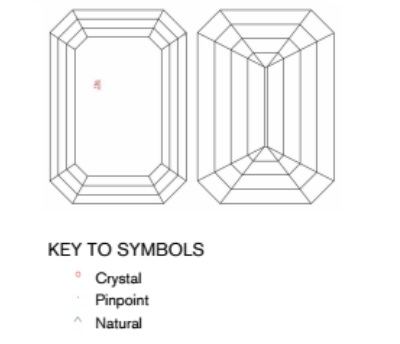
Durability Factors Posed By Inclusions at Vulnerable Areas
The location of inclusions can also impact a diamond’s durability.
For example, if huge feathers or cavities lie close to the girdle, the diamond will be more vulnerable to chipping. Gemological labs like GIA will take such durability issues into account and assign a lower clarity grading (e.g. SI2 or I1) to the stone accordingly.
Compared to inclusions located near the center of the diamond, flaws found near the girdle could be covered up by prongs (prongable) so that they remain hidden from view. However, when a prong is placed on top of an inclusion, it could subject a weak point to a higher level of mechanical stress.
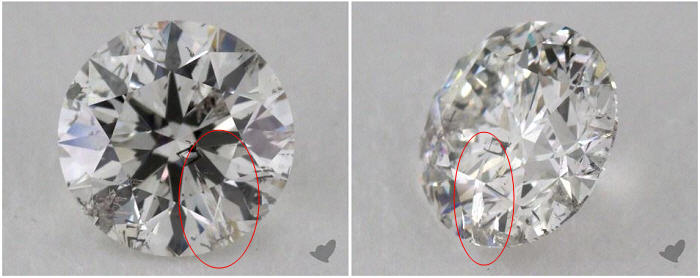
The feather that reaches the surface of the diamond’s girdle is clearly visible at certain tilt angles.
If the large feather or cavity is located at an unprotected area, a sudden impact on the diamond with the right amount of force can possibly result in catastrophic damage. Likewise, improper bench techniques and inexperienced jewelers can cause diamonds to be chipped during the setting process.
Diamonds with durability risks are often priced at a discount and I generally don’t recommend buying them. However, if you do want to take the risks of buying them for their lower prices, you need to be extra careful and seek professional advice before making the purchase.
The Effect of Carat Weight on the Visibility of Flaws
In the grading process, the carat size of a diamond is a direct factor that affects how clarity grades are assigned. For example, in smaller sized diamonds (<0.30 carats), a grade making SI2 inclusion is usually not visible to the naked eye.
However, if this particular inclusion (with exact size and shape) was found in the same location of a one carat diamond, it is likely that the stone will receive a VS2 or SI1 clarity grade instead.
The rule of thumb is – as the carat size increases, the tolerance and visibility of flaws will also increase. You will need higher clarity grades for larger diamonds in order for them to stay eye clean. That is to say, if you are looking for larger diamonds (> 2 carats), it would be extremely difficult for you to find SI1-SI2 diamonds without eye visible inclusions.
To illustrate this, here is an example of a diamond that is over 3 carats in weight and it isn’t eye clean despite obtaining a respectable VS2 clarity grade by GIA.
It’s always a good idea to inspect your diamond before purchase
What Is Still Worth Buying?
If you intend to buy from a local brick and mortar store, always request the vendor to let you examine the diamond under magnification. Check to see if you can notice anything obvious under the loupe or microscope.
If you can’t, chances are you probably won’t catch any flaws with your naked eyes too. Also, make sure that you view the diamond away from misleading spotlights and look at it under neutral, fluorescent lighting.
For people who are shopping at reliable online vendors like White Flash or James Allen, your selection process will be MUCH simpler. Not only will you get to cherry pick the best diamonds for your budget, you also get to scrutinize details away from a pressurized sales environment.
James Allen offers 360° videos for you to inspect full diamond details.
Here’s the thing, consumers often over-exaggerate the situation in their minds after looking at magnified images where details are blown up in proportions. The presence of a few minor inclusions in the pavilion or some tiny blemishes does not mean that the diamond won’t be beautiful.
In fact, most inclusions that can be seen under magnification are actually not visible to the naked eyes.
I’m a practical guy and I believe most of our readers are too. There’s really no need to pay an excessive premium for an internally flawless stone if you don’t have special reasons for getting one. On the next page, I am going to show you a price comparison chart for similar diamonds with different clarity ratings.
Your jaws might drop (literally) after you realize how much more you are expected to pay for higher clarity grades…
Related Articles
Leave A Comment

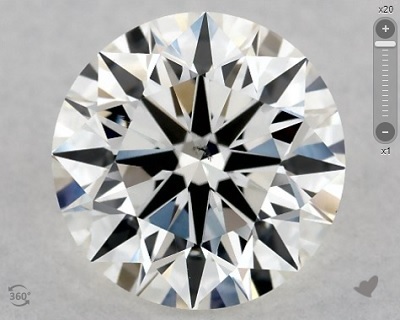
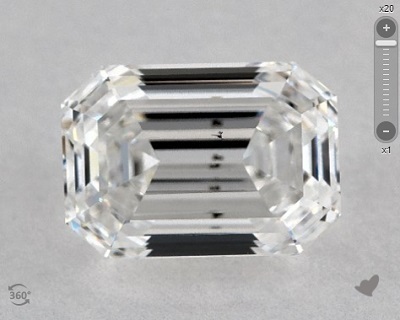
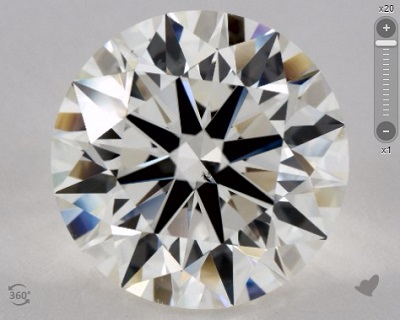
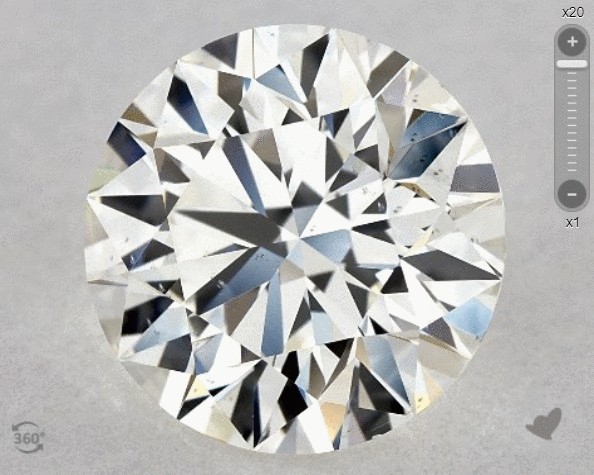
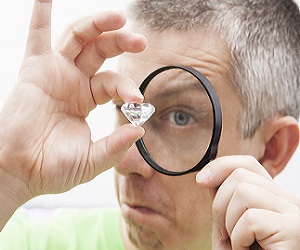
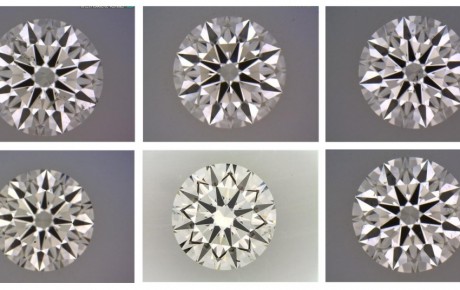

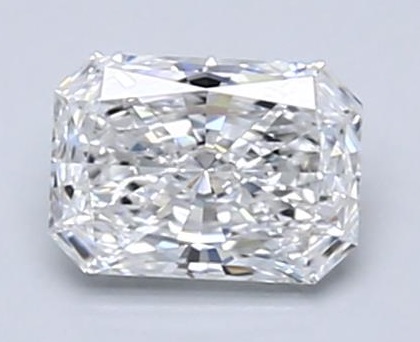









11 Comments
Thank you for your very informative website!
I wonder: have seen a certificate from HRD where there is a “circle” of small points in the clarity picture. What does that mean? The stone is 3ct H, and SI2. The stone is EX-EX-EX.
I have seen another 3ct H, where the girdle is thin 2.5 faceted. Is that too risky..? Should I avoid that stone. this stone is VG-G-EX.
Best regards
Mikke
Those are pin point inclusions.
Read this: https://beyond4cs.com/buying-diamonds-blind/
Wow! Thank you so much for sharing you knowledge. I thought l’d done plenty of research but, l’ve learnt more in a couple of hours reading on your site than in days of online searching.
Hi Paul, I love this website – it’s super useful so thank you for all the advice. I’m looking at this G VS2 3245679292 GIA number. It has some small feathers on the outer, near the girdle. Should I be concerned about it being vulnerable to chipping please? What are the worst types of inclusion to avoid if I were to mount it in a pave setting?
Thanks a lot
Kim
It’s highly unlikely the feathers would be an issue in a VS2 diamond. If durability or damage to the stone was an issue, the inclusion would have been graded with a lower SI or Included rating instead. To answer your last question, I have a compiled a list of inclusion types to avoid in this article.
Hi Paul – your website is an excellent resource!
I’ve been looking at a diamond GIA 7238943338.
It is eye clean upon my review, but another jeweler reviewed the GIA cert and said the external knot blemish in the pavilion would make the diamond susceptible to being damaged either during the setting or while she wears it.
Wanted to get your thoughts…
It’s really hard to say without examining the stone in person. As far as I can tell, the knot is the grade maker in this SI2 diamond which could be an issue given the large size of this particular stone. In a way, the person who reviewed it is raising some valid concerns but there’s no way for me to confirm this for you because of obvious limitations.
Hi Paul,
I really appreciate the hard work you put into this website. It’s been incredibly helpful.
I thought I found a good deal on a diamond that has a knot that can be covered by a prong, but now I’m concerned its position could cause damage. I’m also concerned the value of the diamond is much less than I expected. Do you mind giving me your thoughts on GIA 6272393214? It’s an I, VS2.
Many thanks in advance.
For a VS2 diamond, the knot is not a concern I would worry about. And you are placing your priority in the wrong area. Clarity is not your problem here. Cut quality is.
Hey Paul,
I appreciate all your work and knowledge you have given us consumers. I’ve tried reading and trying to learn as much as possible to find the right diamond at the right price. After plenty I came across one that I can’t seem to rule out. It’s GIA # is 2278854188. The price is actual under my budget and trying to figure out if it’s a good one or not. The clarity characteristics say pinpoint, cloud, and crystal. It looks actually pretty good on james allen 360 super zoom. Just need a second opinion for sure on it.
https://www.jamesallen.com/loose-diamonds/princess-cut/0.92-carat-f-color-vs1-clarity-sku-4389060
Thanks!
It is a well cut diamond and definitely eyeclean. The inclusions are not an issue here.